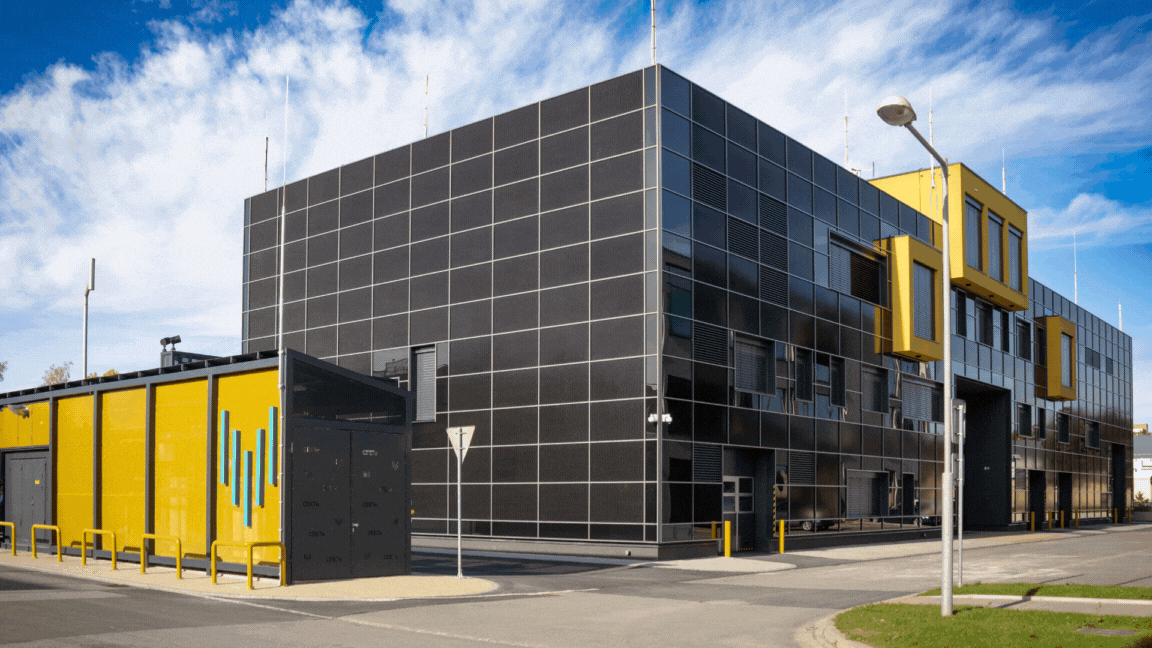The laboratory is equipped with technology for the electrolytic production of hydrogen and its reconversion into electrical energy using fuel cells.
Fuel Cells:
Fuel cells produce direct current (DC) electricity and heat through a catalytic process, converting gaseous fuel and oxidant into electrical energy via a safe, non-combustive reaction. The fuel used is pure hydrogen gas, meeting defined purity and parameters, while the oxidant is air.
The fuel cell modules, or "stacks," operate based on chemical and physical processes characteristic of proton exchange membrane (PEM) technology. These fuel cells are commonly referred to as "PEMFC" (Proton Exchange Membrane Fuel Cells).
The laboratory includes low-temperature PEM fuel cell modules, classified internationally under PEM or PEMFC terminology.
Key Design Elements for the Laboratory:
- Systems for the distribution and measurement of technical gases to support fuel cells with an installed capacity of approximately 100 kWe.
- The research-oriented installation comprises 5 fuel cell modules ("stacks") in a primarily serial electrical connection, with a total output of 50 kW for producing electricity and heat from supplied hydrogen gas.
Electrical and Thermal Output:
- Electrical output is directed via a power coupling inverter located in the hydrogen lab's control room to an AC bus at 3x230/400 V for CEETe’s technological systems.
- Heat output (up to 80 kWt) is extracted through a water cooling circuit using demineralized water, with a temperature gradient of 65/60°C. A heat exchanger divides this heat into two streams, where the secondary stream integrates with the building's waste heat utilization system.
Fuel Cell Inputs:
- Humidified reaction air (up to 5 x 500 Nl/min), supplied via blower/compressor systems.
- Hydrogen gas (up to 5 x 200 Nl/min), stored at an outdoor hydrogen refueling station.
- Fuel cell inerting is conducted using nitrogen gas.
Electrolyzers:
Electrolyzers in the lab produce hydrogen gas with defined parameters and quality. They utilize solid ionic polymer membrane technology for water or aqueous solution electrolysis.
- The lab features distribution and measurement systems for connecting two types of electrolyzers with a total installed power of 85 kWe.
- AEM-type electrolyzers are installed in modular, free-standing trolleys.
Hydrogen production capacity ranges from 1 Nm³/h (minimum) to 8 Nm³/h (maximum) at a pressure of 30 bar. A system for hydrogen parameter adjustment, including residual moisture separation, is integrated into the hydrogen output piping.
Electrolyte System:
- Uses demineralized water with 1% K₂CO₃ + KHCO₃ as the electrolyte.
- Automatically replenished at 4 l/h per module, totaling up to 8 l/h.
- Provides heat dissipation with a cooling capacity of 12 kWt and a temperature gradient of 45/40°C.
Excess oxygen (2-4 Nm³/h) from electrolysis is vented through a fan from an expansion tank. This tank includes an electric heater for start-up phases, with nitrogen used for inerting.



